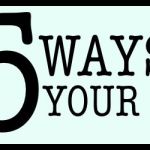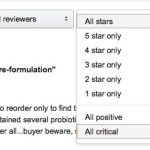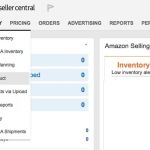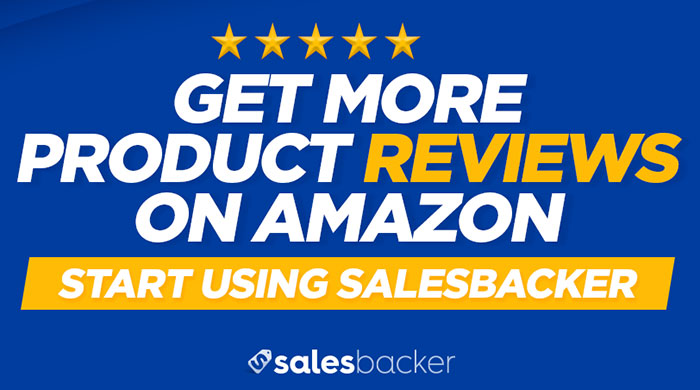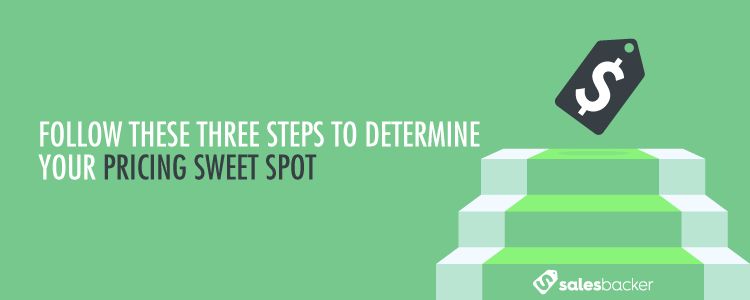
Grace came to me for some advice.
She was extremely excited about her recent decision to launch a new product on Amazon. It was her first one.
She’d taken her time and looked through several Amazon categories. She had done some research through Google Trends and other marketing reports. And she had finally nailed down the niche she was going to conquer - kitchen cleaners.
It had a load of potential and appeared to have enough room to expand her product line as well. Her product idea had all the makings for a great product launch.
But now, it was becoming real. She was actually on the edge of pulling the trigger on ordering and having the product shipped to Amazon FBA. She just wanted to get one more piece of the puzzle in place.
She was trying to determine her pricing.
She had heard success stories from both sides of the spectrum. Some sellers were selling more because they priced low. Other sellers claimed their secret was to price high. But she wasn’t sure she should cut and paste their solutions onto her own product. The amount of information was confusing.
So she asked me the question, “What are the basics of finding the right price for my product?”
Now there are people who have written entire books on pricing, so it’s not an easy question. But I could tell Grace wanted a simple answer.
So I gave her what I’d give anyone who’s just starting out in their first Amazon business - my three step process to determine your pricing sweet spot.
That’s what every brand is attempting to find which is why so many are constantly testing their product pricing by raising it 5% or lowering it 10% or ending it in .97 instead of .99. Every brand is trying to find the “sweet spot” right in the middle of “too high” and “too low”. Amazon sellers are no different.
So whether you’re just launching product #1 or one year into product #3, you’ll want to think through the following steps to evaluate your pricing. These three simple points will always bring you back to center on where your pricing sweet spot actually should be.
STEP ONE: STUDY YOUR COMPETITION
As Grace is getting ready to determine her pricing, she has to look at the pricing of her competitors. This will help her determine the range of price legitimacy her product has in the market.
Price legitimacy refers to the price range acceptable for the product. For example, if you decided to sell your own brand of minute rice, you’d find that the general legitimacy range is between $1.19 and $3.50. If you decided to sell your brand for $16 p/box, you’d have a problem (unless your rice granted immortality).
So Grace researched her top five competitors and logged their own pricing for an 8 ounce bottle of degreaser. Their prices were:
|
Brand |
Price |
|
Kitchen CleanUp |
7.25 |
|
Handyman |
6.25 |
|
Clean Queen |
8.19 |
|
Grease Mover |
8.75 |
|
Grease B Gone |
8.50 |
So by looking at the major players in her category, Grace can determine that a general range for her pricing should be between $6.25 and $8.75. It doesn’t mean she can’t go higher or lower in pricing, but it means she better have a good reason for doing so.
All Grace has so far is a legitimate pricing range, but now what does she do? Does she try to price in the higher or lower range of her competitors?
In order to make an informed decision, Grace needs to complete step two and three. But before we move on, let me point out a warning associated with step one.
It might be tempting to think about pricing lower than your competitors. Perhaps Grace looks at her competitor’s pricing and decides she’ll price her cleaner at $4.98. She could run an advertisement which lined up her product with their products and ask customers to “compare and save”. Wouldn’t customers be swayed by lower pricing?
Not necessarily. Actually, studies have found that pricing your product lower can have two negative influences on your product.
First, pricing your product lower can give it a lower perceived value. You can imagine this easily with important items. If you are shopping for a cough medicine for congestion issues, would you buy a brand that is $5 below the cost of every other brand? Probably not. When a brand without name recognition tries to enter the market at a lower cost, people are naturally suspicious.
Secondly, studies have also shown that when brands ask customers to compare prices, the results are negative. For some reason, customers assume they are being somehow falsely manipulated. However, when customers are allowed to make comparisons on their own without any prior suggestions, customers will typically choose the better value.
Of course, pricing higher than your competitors may also be a temptation. However, a higher price can only be possible if you have a strong differentiation that justifies the price. Without a strong customer base, you will need to persuade potential buyers to see a reason to pay more.
STEP TWO: STUDY YOUR COGS (Cost of Goods Sold)
Now that you have an idea of the price range available to you, it’s time to see if you can make a profit by sourcing your own private label product. You’ll need to begin contacting suppliers in your niche and getting estimates on the product you’re interested in. Only then can you begin making decisions about your actual price.
The Cost of Goods Sold refers to the manufacturing cost of your product. So for example, if you were sourcing hair brushes, you’d want to know how much each hair brush would cost including both materials and labor. Usually, the manufacturer will give you this information during the estimate.
So if Grace were to get estimates on her own formula of kitchen cleaner, she’d want to know her COGS p/bottle. Let’s suppose the manufacturer's she contacted gave her the following estimates:
|
Natural Chemicals, Inc. |
$0.50 p/16 oz bottle |
|
Timber Laboratories |
$0.55 p/16 oz. bottle |
|
Brickman Chem Co. |
$0.46 p/16 oz. bottle |
|
We Do Acid Laboratories |
$0.52 p/16 oz. bottle |
If Grace decides to go with the lowest estimate ($0.46) and sold her own brand for $7, she could estimate that she would make about $6.54 per bottle. That’s remarkable! But is that accurate?
Not necessarily.
Even though Grace has her COGS, she’ll need to think through other expenses and overhead not directly related to the supplier. This might include the cost of design and production of labels for the bottles, the cost of Amazon’s fees per product, and possibly the cost of advertising or giveaways associated with that product. Once those fees are factored in, Grace will determine if her $7 price tag is feasible or not.
So now Grace reworks her chart to look more like this:
|
MFG costs (COGS) |
Labels |
Amazon Fees |
Price |
|
$0.46 p/bottle $460 for 1,000 bottles |
$0.35 p/bottle $500 for 1,000 bottles |
$4.59 total ($1.05 fee, $1 order handling, $1.04 pick and pack fee, $1.50 weight handling fee) |
$7 p/bottle |
Notice how Grace’s initial COGS was important but didn’t give the best picture of her profit margin. Now, with all fees included, her total cost per bottle is $5.40, making her total profit only $1.60. Grace can now make adjustments to her pricing to increase her profit margin. At this point, it seems Grace’s $7 price point isn’t enough to hit an ideal profit margin.
Of course, this profit margin might be helped by buying a larger quantity and reducing the cost per bottle from the supplier. Then, if Grace can increase her sales to a large number, she may be making enough to maintain a sustaining business on Amazon.
Always, always, always determine your COGS and profit margin before setting your price.
STEP THREE: STUDY YOUR CUSTOMER
One important factor often overlooked by Amazon sellers is their typical customer base. Of course, when you’re just starting out, you won’t know who your customer base is yet, but you can probably imagine the kind of people you want to purchase your product.
The problem is that new sellers often begin pouring over competitors numbers and their own profit margin numbers and completely forget to ask the question, “But will customers pay that much for the product?”
Remember, you’ll probably need to avoid the two extreme ends of pricing. You don’t want people coming to you simply looking for a great bargain. That won’t result in a long-term sales strategy. It’s okay if customers see your product as a good value, but you don’t necessarily want to be known as the flea market of Amazon.
But it might be difficult as well to enter the Amazon market with a high-end price as well. As mentioned before, a new product better have a very valuable and clear differentiation from it’s competitors if it’s going to enter Amazon wearing an expensive price tag. It’s also important to consider whether customers come to Amazon to purchase high-end products. Depending on your product niche, this may not be the most likely scenario.
Back to Grace. Grace envisions her own product being purchased primarily by moms in the kitchen and not by commercial kitchen workers. She knows that moms are often looking for deals and not necessarily for high-priced product. Besides this, the residential kitchen cleaner niche isn’t necessarily a high-end category.
So Grace probably can’t decide to charge $10 per bottle unless her cleaner had a distinct advantage over her competitors. She needs to not only ask how much can I make from a kitchen cleaner product but also how much will moms pay for a kitchen cleaner?
Starting out, you’ll need to consider the same two factors: Are customers in your niche willing to pay your price, and are customers looking for your product willing to pay your price? Don’t be afraid to test different price points in order to answer those questions with real data.
Additional Pricing Methods
Price Anchoring
Price anchoring refers to placing your price alongside another higher price point making the customer feel that your price is a deal. You see this all the time while you shop though you may not be familiar with the term.
Whenever you watch an infomercial, the spokesperson will always begin with a question: “What would you expect to pay for a product like this? $100? $200?” Those prices are mental suggestions. It’s like saying, “We should really charge you $200 for this product.”
But then the announcer says, “But the actual price for the product is only $59.99.” And compared to $200, $59.99 sounds like a steal. The announcer may even use the actual price as another anchor. “But if you call in the next 30 minutes, you can get the product for only $29.99.” Truth be told, the product may only be worth $12.99, but by anchoring the price to higher prices first, $29.99 is a great deal.
On Amazon, price anchoring will usually take place by setting the price higher than your actual sale price in the backend of your Amazon product listing.

But whenever you advertise your price, try to anchor it next to a higher price.
The Power of 9
There is evidence that prices ending in the number 9 usually outperform prices with alternate endings. There is enough studies verifying the power of the 9 ending that these prices are called “charm prices”, so Grace may want to set her price at $6.99 or $7.49.
However, Derek Halpern over at Social Triggers argues that there are no studies proving that the 9 magic works with online sales. It’ll be up to you to decide whether you want to try it or not.
Offering a Middle Option
Though this may not apply to those starting with their first product on Amazon, offering a middle option may come in handy as you continue to expand your business.
Studies have shown that brands who offer two product choices can increase the sales of the higher priced product by creating a middle option. Let me explain by way of an illustration related to Grace.
Let’s say that Grace eventually expands her product choices and offers not only a 16 oz. bottle for $7 but also sells an 8 oz. bottle for $3.75. If the studies are correct, Grace could introduce a middle option, a 10 oz. bottle for $6.50, and customers would gravitate toward the higher priced 16 oz. bottle.
Original Product Selection
|
8 oz. bottle |
$3.75 |
|
16 oz. bottle |
$7.00 |
Inserting a Middle Option
|
8 oz. bottle |
$3.75 |
|
10 oz. bottle |
$6.50 |
|
16 oz. bottle |
$7.00 |
Now, of course, very few customers would ever purchase the 10 oz. bottle because it’s way overpriced, but placing it there suggests that the 16 oz. bottle is a great deal. In the end, it’s a more subtle form of price anchoring.
Conclusion
By taking into consideration your competition, your cost of goods sold, and your customer base, you’ll be making a much more informed decision about setting the price of your Amazon product.
But once you’ve factored each of these in, don’t hesitate to experiment with different pricing. Perhaps Grace could set her price point at $7 for two or three weeks, then change the price to $6.99 for another three weeks. She may find that the penny difference makes customers feel slightly better about their purchase and increases sales.
In the end, you get to make the ultimate decision about your price point. So do it wisely with plenty of consideration for these three areas.
